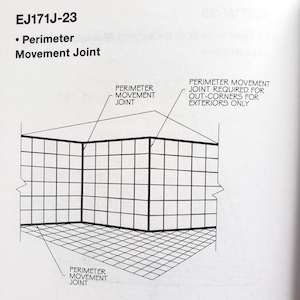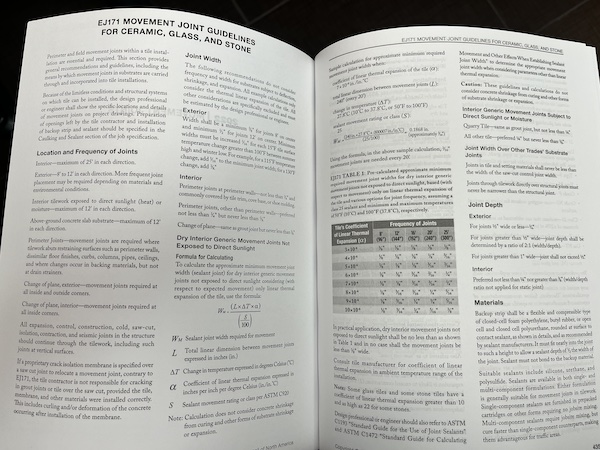Question
I’m looking for a quick confirmation. I have a designer who’s telling me I don’t need expansion joints with 8″ x 8″ cement tiles on a floor with a mortar bed under a sheet of DITRA. I told him DITRA works as an uncoupling membrane, not as a replacement for an expansion joint. What are your thoughts?
ANSWER
Thanks for writing to the NTCA Technical Team with your question regarding expansion joints.
You are correct that all tile installations require expansion/contraction joints, no matter the size of the tile.
Every job will require a perimeter movement joint and a movement joint at all changes of plane.

Additional movement joints may be required depending on the size of the installation and site conditions. All of this information, including a section on “Location and Frequency of Joints” can be found in the 2023 TCNA Handbook, EJ171, page 434.
Please note the second paragraph (page 434) that states – “Because of the limitless conditions in structural systems on which tile can be installed, the design professional or engineer shall show the specific locations and details of movement joints on project drawings.”
In other words, it is required to have an architect or engineer tell you (the tile contractor) where to place these expansion/contraction joints. The system design professional – such as an architect or project engineer that understands all aspects of the tile, setting materials, layers of the installation and movement, expansion, contraction of the structure – should determine the design, location, placement and materials used to construct the soft joints and communicate them through the specification to all tile contractors reviewing the specification for bid. If a design professional is not involved with this project, and your business decides to take on the responsibility/liability of determining the location and frequency of movement joints it is recommended to follow the information found in EJ171.







